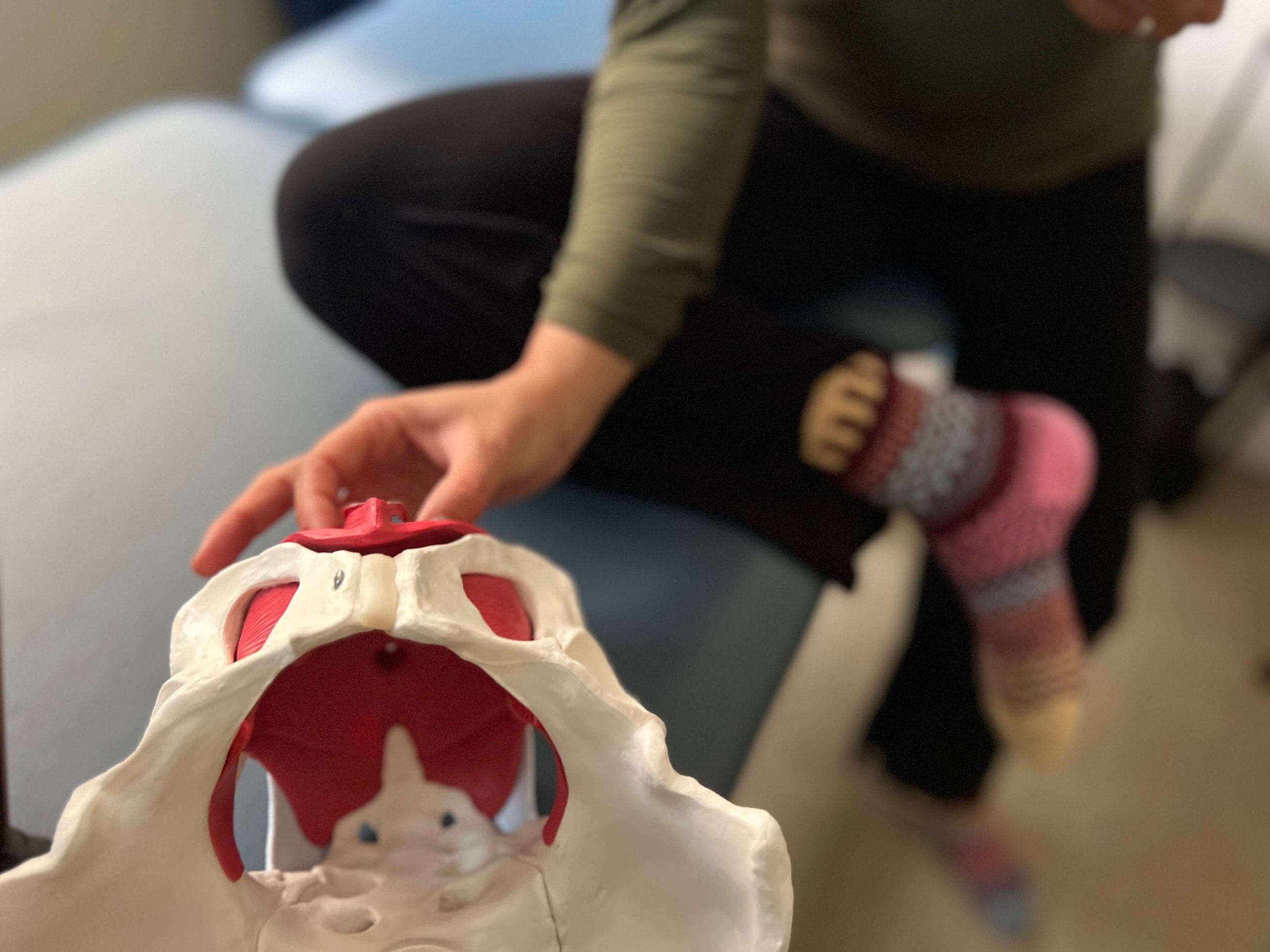What Causes Sharp Stabbing Pain in the Vulva?
Authored by the Bodyful Physical Therapy and Wellness team.
Pelvic floor therapy can help many different issues. One major issue it addresses is pelvic pain.
If you experience sharp stabbing pain in your vulva, you may be diagnosed with vulvodynia. Vulvodynia is a type of pelvic pain that often occurs at the vulva (think opening of the vagina). The symptoms may include the clitoris.
You may have also heard of vestibulodynia. The symptoms can be similar, and the causes and treatments may vary somewhat.
You may experience these symptoms during or after sitting, standing, and exercise. You may not tolerate tight fitting clothing. Your skin may be sensitive, too. You may experience vaginal discomfort during penetration.
These symptoms can often become a barrier to pleasurable penetrative sex. Sex should not be painful (unless you want it to be).
Vulvodynia can feel like a burning sensation and can occur without penetration or tight clothes. It can sometimes be diagnosed as vestibulodynia if the pain is more specifically at the vestibule, which is smooth, transitional tissue between the labia minora and vaginal opening, and includes the urethra.
This distinction can be helpful information because your vestibule is kept happy and healthy through appropriate amounts of estrogen and testosterone. If there is not enough blood flow to bring the hormones to this tissue, it can get irritated. Tense, tight, stressed pelvic floor muscles can decrease blood flow and contribute to this issue.
Folks who are on oral contraceptive pills (OCPs) may also need to consider this when experiencing vestibulodynia. OCPs also decrease levels of estrogen and testosterone and have been linked to causing pelvic pain for some individuals.
If you are in perimenopause, postmenopause, or recently postpartum and lactating, you may also have less hormones to your vulvar tissues. Vulvar moisturizers or topical hormones may be indicated.
If the vestibulodynia is not hormonally mediated, it is possible that it is neuroproliferative. This essentially means that the nervous system has learned over time to be more alert and more sensitive in this area to protect against real or perceived threat.
One example of what can cause neuroproliferative vestibulodynia is a history of chronic infection. If you have been experiencing chronic urinary tract infections, yeast infections, bacterial vaginosis, and sexually transmitted infections, it is possible that you are no longer positive for infection but still feeling similar pain.
You may be experiencing more than one symptom. It may change and fluctuate. That is because there are also so many nerves that move through your pelvis and receive information.
If you experience sharp stabbing pain in your vulva, it may be more muscular. It may be caused by tension and tight pelvic floor muscles, very similar to when neck tension causes headaches.
If you experience nerve pain in your clitoris, or fluctuating burning sensations in your vulva, your pelvic nerves may be compressed from tense muscles, or pulled and strained from faulty postural habits.
If you experience burning pain in your vulva, it could be caused by thinning, sensitive tissue from decreased blood flow and decreased hormonal supply.
Your pelvic floor therapist is a pelvic pain specialist and is trained to guide you to the correct diagnosis and plan of care.
Your body is smart and loyally protects you. When you experience repeated threats to tissue, your nervous system grows more fibers that are sensitive to pain stimulus so you can track sensations with more sensitivity and protect you. Overtime, even when the true threat is no longer there, the body can still have an increased sensitivity and an encoded memory of pain.
How to get vulvar pain relief?
This is where a somatic movement approach to pelvic floor therapy can help. Somatic movement therapy is an approach to guide your return to your whole self. If your body is still bracing from the memory of pain, somatic movement therapy with pelvic floor therapy offers treatments to disengage from habitual movement patterns that may be contributing to the tightness and decreased blood flow.
Tissue holding and pain patterns often change with ease when a new experience and relationship to safety at that specific tissue is felt and practiced repeatedly, over time. It is a practice in training your mind and healing by moving.
You deserve to feel safe, comfortable, and supported. With a container held by your relationship with your therapist, you may feel parts of your body, including your connective tissues, fascia, pelvic floor muscles, and blood vessels, and you may re-member this felt sense to move in corrective ways that decrease the pain and improve your empowerment.
With practice and feedback from your therapist, your awareness of how you can shift away from pain and towards ease will become more ingrained and conditioned.
Your pelvic floor therapist may offer gentle, supportive, and specific manual therapy techniques, as well as individualized, corrective exercises and somatic movement therapies to improve your vaginal discomfort. Your therapist will guide you to the breathing patterns, postural support, hip flexibility and strength, and core activation important to keep your pelvic floor healthy and happy.
You may have questions about if you should use dilators, if you should be doing kegels, and diet and hygiene recommendations. Contact us and we will answer these questions!
Your body has a unique story and deserves to feel safe, to receive competent care and best evidence based practices, and to have the appropriate resources to support an effective, holistic, comprehensive, return to self and to slowly peel back the layers of how and why your body is expressing itself with this pain pattern.
Your story matters. Your beliefs are expressive. Your body-mind connection will heal you
.
Curious to learn more about somatic approaches to pelvic floor therapy? Book an exploratory call with us here.
Bodyful Physical Therapy and Wellness is located in Oakland, CA and is serving the greater Bay Area population.

